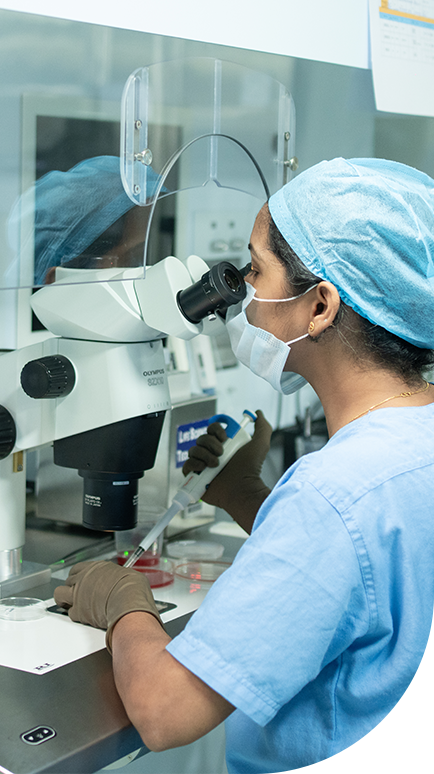Blastocyst Culture

What is Blastocyst Culture?
Blastocyst culture refers to the process of allowing an embryo to develop in the embryology laboratory for five to six days after oocyte retrieval (egg pick-up). At this stage, the embryo, known as a blastocyst, is mature and has more cells which potentially improves pregnancy.
Who can opt for Blastocyst Culture?
Blastocyst culture is recommended for:
- Improved success rates, as a routine to improve embryo selection & embryo-endometrial synchrony
- Couples undergoing IVF with multiple high-quality embryos
- Those with repeated unsuccessful IVF attempts using day 2 or day 3 embryo transfers
- Patients for whom a single embryo transfer is done electively to reduce the risk of multiple pregnancies. This reason could be a medical indication or patient preference
- Individuals or couples wanting to screen embryos for genetic conditions (PGT-A / PGT-M / PGT-SR) before transfer
What are the prerequisites for Blastocyst Culture?
Before opting for blastocyst culture:
- A thorough assessment of the quality of embryos is done on day 3 post-OPU (by an expert embryologist)
- An optimal lab environment, since longer culture needs more precise conditions for optimal embryo growth
- A discussion with the fertility specialist about potential outcomes, benefits, and risks
What are the steps involved in Blastocyst Culture?
The process involves:
1

Fertilization
After egg retrieval, eggs are fertilized with sperm either through (IVF/ICSI)
2

Extended Culture
Instead of transferring or freezing the embryos on day 3, they are allowed to develop in the lab for up to five to six days until they reach the blastocyst stage
3

Monitoring
These days, embryologists closely monitor the embryos’ development, selecting the most viable blastocysts for transfer
Post-Blastocyst Culture procedure

1
The selected blastocyst(s) are transferred to the woman’s uterus, aiming for a higher implantation success rate
2
Any additional high-quality blastocysts can be frozen (vitrified) for future use in subsequent cycles
Frequently Asked Questions
Does blastocyst transfer guarantee a pregnancy?
While blastocyst transfers can offer higher implantation rates, no procedure guarantees pregnancy. However, it increases the odds compared to cleavage-stage embryo transfers.
What happens to the embryos that don't reach the blastocyst stage?
Not all embryos will develop into blastocysts. Those that don’t progress may be monitored for an extra day, but if they don’t develop further, they’re usually not viable for successful implantation and hence not used further.
Are there any risks associated with blastocyst culture?
A potential concern is that not all embryos will develop to the blastocyst stage, possibly leaving fewer or no embryos for transfer. It’s vital to consult with your fertility specialist to weigh the pros and cons.
